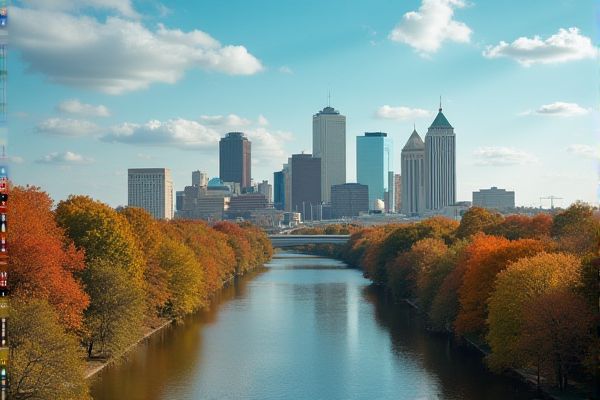
Cost of living in Oklahoma: Affordable housing market. Low utility costs. Moderate grocery prices. Competitive healthcare expenses. Reasonable transportation costs. Varied entertainment options. Economical education fees. Lower-than-average tax rates. Inexpensive dining out. Accessible public services.
Affordable housing market
Oklahoma faces a significant shortage of affordable housing, with a large portion of both renter and owner households being housing cost-burdened. The state needs a substantial increase in rental units for extremely low-income renters to alleviate this issue. Despite an overall low cost of living, the affordable housing market is experiencing strain due to rising home prices and rents, alongside a lag in new construction, particularly in the affordable and mid-range segments. To explore more about these challenges and potential solutions, you can review the Housing Affordability Study 2021 conducted by the city's Planning Department.
Low utility costs
In Oklahoma, the average electric bill is $135.14 per month, with an average electricity rate of 11.70 C/kWh, which is significantly lower than the national average. This, along with other utility costs such as gas, water, and internet, contributes to Oklahoma's overall low utility costs, making it one of the most affordable states in the U.S. For more insights on this topic, you can explore the Average Electric Bill in Oklahoma, which breaks down the utility expenses further.
Moderate grocery prices
The cost of living in Oklahoma is notably affordable, especially when it comes to essentials like food and beverages. On average, the monthly grocery and food expenses reach approximately $230 per person, amounting to an annual cost of $2,756. This positions Oklahoma as the state with the lowest food and beverage costs nationwide. Although the weekly average grocery bill is $279, which slightly surpasses the national average of $270, the overall affordability remains a significant advantage. For those interested in more details, the thorough analysis provided by SoFi sheds light on the broader aspects of living costs in the state.
Competitive healthcare expenses
In Oklahoma, the average annual healthcare costs per person are around $6,121, or approximately $510 per month, which is slightly above the national average of $477 per month. Healthcare expenses can vary widely depending on individual health needs and the presence of chronic illnesses. For those looking to further understand these expenses and more about living in Oklahoma, the Cost of Living in Oklahoma resource offers detailed insights into various factors affecting the state's economic landscape.
Reasonable transportation costs
In Oklahoma, public transportation costs are generally below the national average, with cities like Enid, Broken Arrow, and Oklahoma City offering bus and streetcar services at rates such as $1.75 per ride or $50 for a monthly pass. This makes transportation a relatively affordable aspect of the state's cost of living. For more detailed information, visit the Cost of Living in Oklahoma page, which provides insights into various expenses across the state.
Varied entertainment options
Oklahoma, particularly through venues like WinStar World Casino & Resort, offers diverse and top-tier entertainment options, including pop, country, classic rock, and comedy shows, catering to a wide array of tastes and providing unforgettable experiences.
Economical education fees
In Oklahoma, pursuing higher education comes with varying expenses depending on the type of institution and residency status. The average tuition for public in-state students is approximately $6,397, while out-of-state students face an average tuition cost of $13,130. For those attending private colleges, the financial commitment increases further to about $23,298. Beyond tuition, students must also consider additional living costs, which range from $13,621 for on-campus living to $15,110 for off-campus arrangements, emphasizing the importance of comprehensive financial planning for potential students and their families.
Lower-than-average tax rates
Oklahoma has a progressive income tax system with rates ranging from 0% to 4.75%, and it boasts a below-average tax burden. With an effective state-local tax rate of 9%, it ranks as the 10th best in the country for local tax burdens. For more detailed information on the Cost of Living in Oklahoma, you can explore various factors that make the state an attractive place to live financially.
Inexpensive dining out
In Oklahoma, you can find numerous affordable dining options where meals can be had for less than $10, such as Jigg's Smokehouse, Katie's Diner, and The Greek House, offering a range of cuisines from BBQ to Greek and comfort food at budget-friendly prices.
Accessible public services
In Oklahoma, public services are made accessible through the Oklahoma Electronic Information Technology Accessibility (EITA) Act, which ensures that information technology, including website content and tools, is accessible for persons with disabilities, aligning with Section 508 of the Rehabilitation Act.
